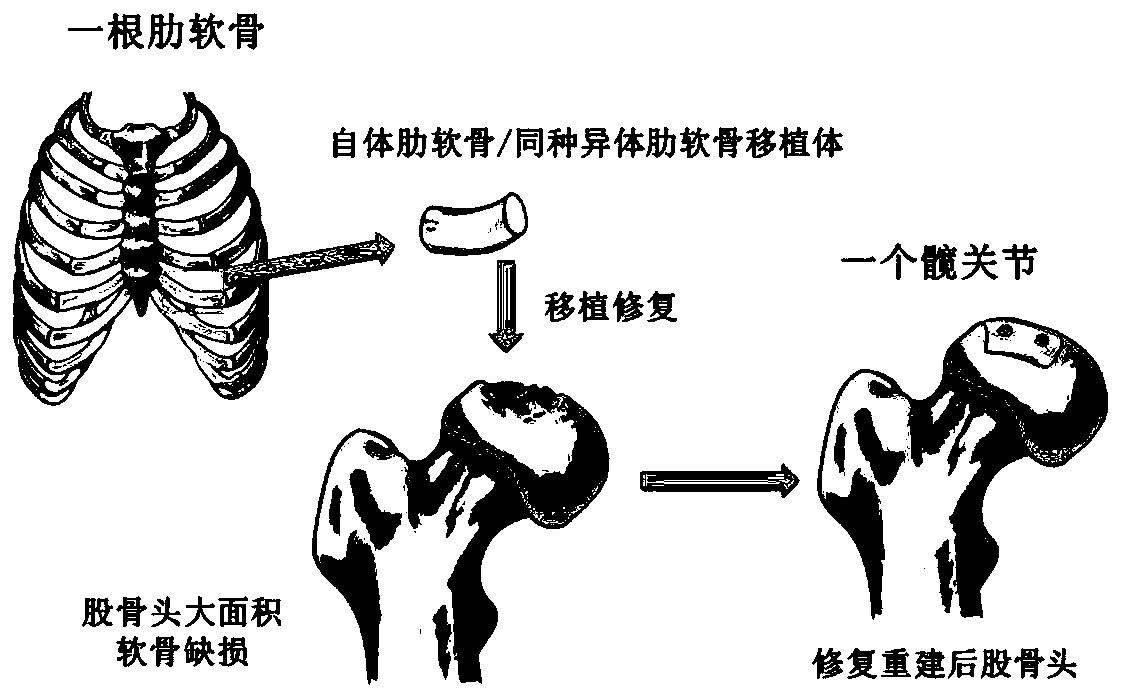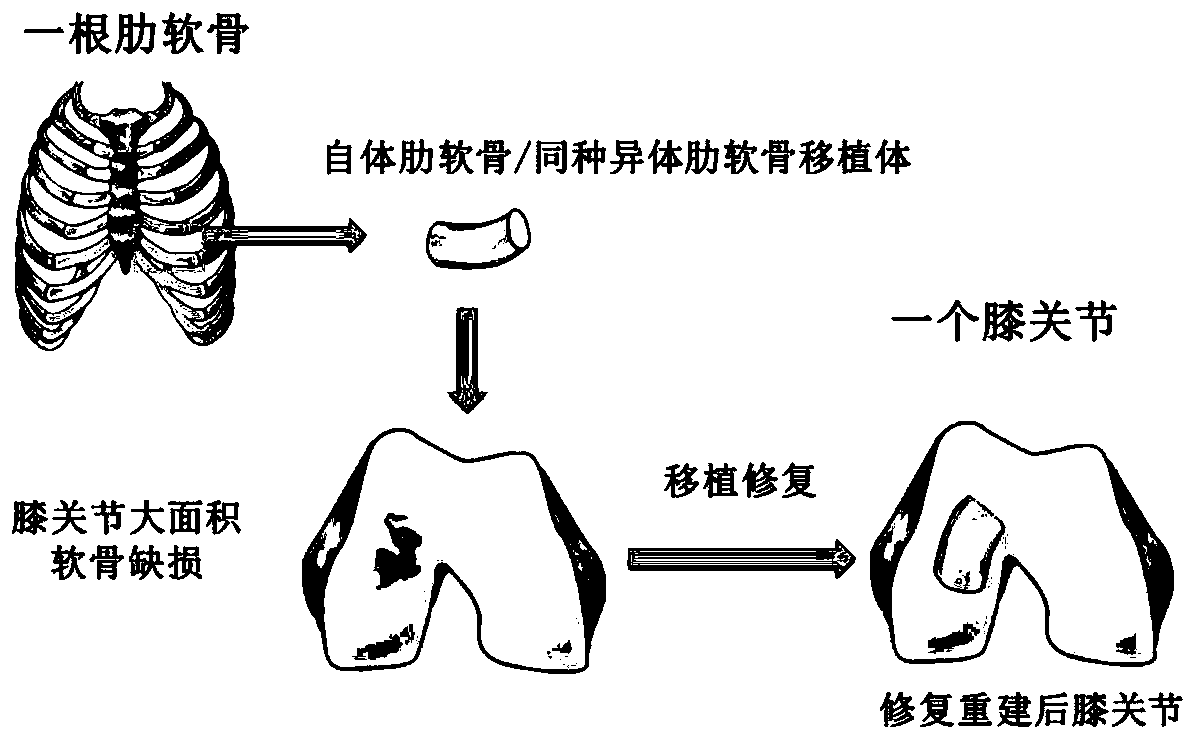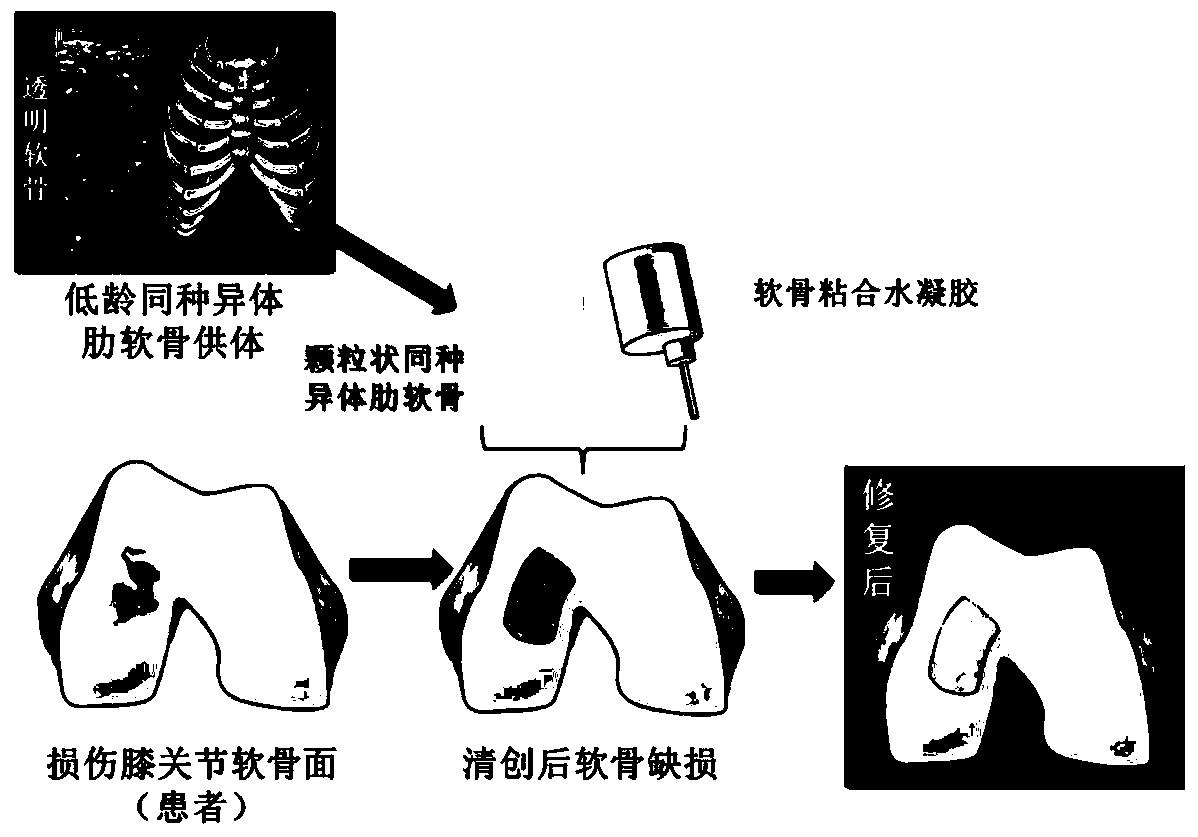Transplant and method for repairing articular cartilage defects
A technology for repairing joints and articular cartilage, which is applied in the fields of medicine and biomedical engineering, and can solve the problems of side injury in the patient's donor site, difficult repair and reconstruction of large articular cartilage damage, etc., and achieve minimally invasive effects.
- Summary
- Abstract
- Description
- Claims
- Application Information
AI Technical Summary
Problems solved by technology
Method used
Image
Examples
Embodiment 1
[0063] Present embodiment is the method for repairing femoral head cartilage injury with autologous costal cartilage transplantation, and its steps are as follows: figure 1 shown, including:
[0064] Under general anesthesia, the patient was placed in a supine position, and the Smith-Peterson approach was used to incise the skin, subcutaneous tissue, and fascia lata in sequence, paying attention to protecting the anterolateral femoral cutaneous nerve, fully exposing the anterior joint capsule of the hip joint, and paralleling a "T" shape cut open. After the hip joint is fully released, the femur is extremely adducted and externally rotated to disengage the femoral head. Thoroughly clean the degenerated and necrotic bone and cartilage tissue of the femoral head, and confirm the osteochondral defect area on the surface of the femoral head after cleaning. According to the bone defect, the ipsilateral iliac bone fragment was taken in the same incision to reconstruct the subchond...
Embodiment 2
[0066] This embodiment is a method for autologous costal cartilage transplantation to repair knee articular cartilage damage, and its steps are as follows: figure 2 shown, including:
[0067] After the anesthesia takes effect, the patient is placed in the supine position. Routine disinfection, sterile towels, and tourniquets on the affected limbs to reduce bleeding. The left knee parapatellar medial longitudinal incision skin, superficial deep fascia, incised medial patellar support ligament, turned the patella laterally to expose the damaged cartilage surface of the medial femoral condyle. Thoroughly remove diseased cartilage and subchondral bone tissue until fresh bleeding occurs on the bone bed. The ipsilateral ilium was harvested and transplanted to reconstruct the subchondral bone defect. At the same time as the knee surgery, another group of doctors stood on the right side of the patient to harvest the costal cartilage. The skin was incised about 4 cm along the long...
Embodiment 3
[0069] This embodiment is a method for repairing femoral head cartilage damage with allogeneic costal cartilage transplantation. Specifically include:
[0070] Collect and preserve allogeneic cartilage: take the costal cartilage from a young donor and place it in a preservation solution (serum-free medium and pH buffer), and remove the preservation solution before use;
[0071] Under general anesthesia, the patient was placed in a supine position, and the Smith-Peterson approach was used to incise the skin, subcutaneous tissue, and fascia lata in sequence, paying attention to protecting the anterolateral femoral cutaneous nerve, fully exposing the anterior joint capsule of the hip joint, and paralleling a "T" shape cut open. After the hip joint is fully released, the femur is extremely adducted and externally rotated to disengage the femoral head. Thoroughly clean the degenerated and necrotic bone and cartilage tissue of the femoral head, and confirm the osteochondral defect...
PUM
| Property | Measurement | Unit |
|---|---|---|
| size | aaaaa | aaaaa |
Abstract
Description
Claims
Application Information
 Login to View More
Login to View More - R&D
- Intellectual Property
- Life Sciences
- Materials
- Tech Scout
- Unparalleled Data Quality
- Higher Quality Content
- 60% Fewer Hallucinations
Browse by: Latest US Patents, China's latest patents, Technical Efficacy Thesaurus, Application Domain, Technology Topic, Popular Technical Reports.
© 2025 PatSnap. All rights reserved.Legal|Privacy policy|Modern Slavery Act Transparency Statement|Sitemap|About US| Contact US: help@patsnap.com



